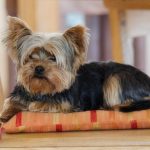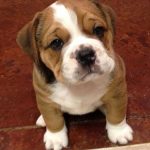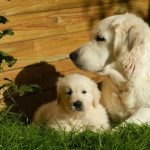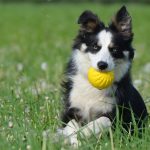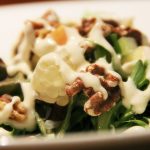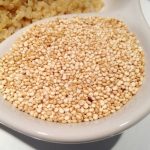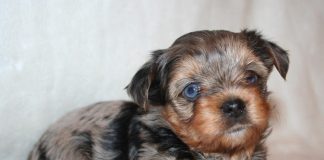
Ever wondered what the Siberian Husky would look like if it had the spotted coat of the Dalmatian? It’s easy to visualize. How about their traits? We know these breeds are very different from each other. The Dalmatian belongs in the non-sporting group while the Siberian Husky is part of the working group.
They have more differences than similarities in terms of traits. It is interesting to know what the outcome would be when these two breeds collide. If you are curious enough, read on to learn more about this remarkable combination.
Breed History
As the name suggests, the Dalmatians have their origins from a place once called Dalmatia, located near the Adriatic Sea in Europe’s central region. The first Dalmatians are believed to have existed around the 1800s. They were coach dogs, in charge of trotting beside horse-drawn coaches.
The Dalmatian is so popular that breeders thought of pairing it with other dog breeds one of which is the Dalmatian Husky. It can also be bred with the Border Collie, Pitbull, Golden Retriever, Beagle, and Shar-Pei. It is easy to spot a dog with a Dalmatian mix because of the round black spots.
Meanwhile, the Siberian Husky originated in Northeast Asia. The Thule people brought them from Siberia to North America in the early 1900s. They are descendants of the sled dog. The term Husky refers to “Esky” or Eskimos. The Chukchi Eskimos used them to pull heavy loads.
Like the Dalmatian, the Husky can also be paired with other dog breeds to create adorable hybrids. Examples of breeds often paired with the Husky are the Malamute, Basset Hound, Rottweiler, Chow Chow, and German Shepherd.
Dalmatian Husky Appearance
Many of the dogs of this mixed breed have the same eyes as the Siberian Husky, blue in color and shaped like an almond. Dalmatians may also have blue eyes although black is more common among them. Their eyes are somewhat round and are moderately sized.
The ears may appear folded like the ones of the Dalmatians. If they are erect, it is a trait inherited from the Husky parent. When it comes to the tails, the Dalmatian has a straight tail while the Husky has a saber tail. Both of them don’t have folds and wrinkles.
Dalmatian Huskies are medium-sized dogs like their parents. They can grow anywhere between 35 to 60 pounds. On average, the male ones grow up to 23 inches while the females are slightly shorter at 22 inches.
Dalmatian Husky Mix: Recognitions and Other Names
To shorten the name, many pet owners simply refer to them as the “Dalusky.” So far, the Dalmatian Husky has not received recognition from major kennel clubs for hybrids and designer dogs.
Coat Type and Color
As puppies, the Daluskies have a white and short coat. They are born spotless and the spots may not appear until the first month of life. In the beginning, the spots are somewhat grey and will continue to develop and darken as the dog grows older.
A Dalmatian Husky mix has a straight coat type similar to its parents. The Dalmatian and the Husky are both furry but they have different shedding levels. They are not hypoallergenic so if you are looking for a pet with minimal shedding, the Dalmatian Husky may not be the dog for you.
It sheds all year round so owners have to be prepared about pet hair all over the house. Their hairs are quite stiff which makes it extra challenging to remove from surfaces. If you are planning to get a Dalusky, keep a vacuum at hand.
The Dalmatian Husky is not a hypoallergenic dog so it requires routine maintenance. Regardless of that, it is worth noting that it does not normally emit a foul odor due to the oil in the coat, a characteristic inherited from the Dalmatian and the Siberian Husky.
Tips in Raising a Dalmatian Husky
- Brush the coat weekly. A solid rubber brush is effective in removing loose hair from the coat. A bristle brush will also do as long as you do it as gentle as you can. Brushing the hair on a weekly basis can help get rid of dead hair. It also keeps the coat gleaming.
- A full bath once every 3 to 6 months will be enough to keep your Dalusky clean. It may inherit the smooth coat of the Dalmatian parent which contains natural oil. The oil protects them from dirt, which means they don’t need much grooming.
- Walk your dog regularly to keep his joints healthy. The Dalmatian Husky may get the intense physical needs of a Siberian Husky. It can be very active and will enjoy lots of time exploring the outdoors.
- Feed a healthy and well-balanced diet. Because your Dalmatian Husky uses a lot of energy, he will benefit from high-quality protein in their diet. You may offer commercial dog food or kibbles as long as they are of high quality.
Dalmatian Husky Health
The Dalmatian and the Siberian are generally healthy. The life expectancy of a Siberian Husky ranges from 12-15 years. A Dalmatian tends to live longer at 13-16 years on average. However, genetics may cause them to have certain problems, including the following:
- Cataracts – in their senior years, dogs may be susceptible to cataracts just like any dogs. It is the second leading eye disease among canines. Instead of appearing clear, the eyes will look cloudy. This condition is often inherited among Dalmatians. Dalmatians with blue eyes are more affected with blindness that is why breeders discourage breeding them.
- Deafness – it is very common in Dalmatians, with as many as 15-30% of them suffering from hearing loss. Their patchy piebald coloration has genes responsible for deafness.
- Hip Dysplasia – Daluskies are usually playful so if you noticed your pet having difficulty jumping, running, and climbing there might be something wrong with him. This is one of the symptoms of hip dysplasia, which is a skeletal disease that affects the hip joints.
- Progressive Retinal Atrophy – this retinal degeneration is inherited and affects certain dog breeds including the Siberian Huskies. During the onset of the disease, dogs will experience difficulty seeing at night. Later on, it will turn to difficulty seeing in daylight. A dog with PRA may become completely blind. Bringing the pet to a vet to have the retina checked is a way to diagnose the condition.
Dalmatian Husky Personality
Anyone will fall in love with the Dalmatian Husky’s extreme friendliness. They are the ideal hybrid if you are looking for a family pet. Having them around will not be a problem if you have kids or other pets at home because the Dalmatian Husky is overall friendly.
Coming from breeds that are both affectionate and loving, it will come as no surprise if your Dalmatian Husky has such traits. It also has a want-to-please attitude. The only drawback about this hybrid is their tendency to be stubborn.
Conclusion
The many positive traits of the Dalmatian and the Siberian Husky are the reason why it is a good idea to combine them. That is the main purpose of creating a hybrid dog, anyway. The mix is the perfect pet for you if you don’t mind having a dog with high energy levels. It can easily adapt to any environment so whether if you live in an apartment or have a large yard, that would not be a problem.







